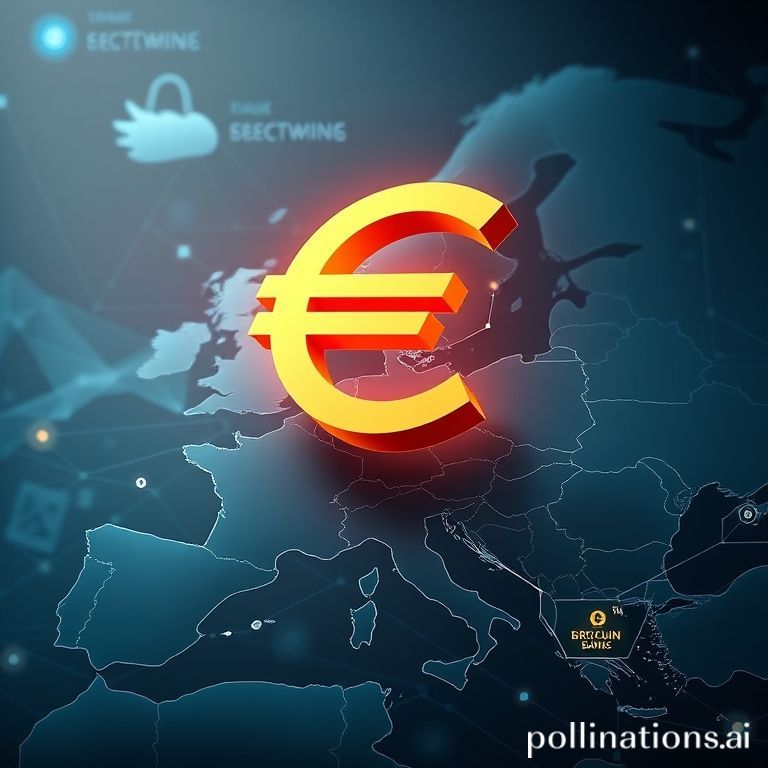
A significant collaboration is underway in the European financial sector, as a powerful consortium of leading European banks has announced plans to develop a new euro-denominated stablecoin. This ambitious initiative aims to establish a robust and trusted European payment standard within the rapidly evolving digital ecosystem, directly addressing what they perceive as a US-dominated stablecoin landscape.
The group, comprising prominent institutions such as Denmark’s Danske Bank, ING, Banca Sella, KBC, DekaBank, UniCredit, SEB, CaixaBank, and Raiffeisen Bank International, is pooling its resources and expertise to create a digital asset designed for efficiency and broad utility. This move signifies a proactive step by European financial players to assert their independence and innovation in the global digital finance arena, fostering greater strategic autonomy in payments across the continent.
Reshaping European Payments with a Digital Euro
The core objective behind this stablecoin project is to deliver a cutting-edge payment solution that offers near-instant and significantly low-cost transactions and settlements. In an interconnected global economy, the ability to facilitate 24/7 access to efficient cross-border payments is paramount. This stablecoin is envisioned to unlock new possibilities, including programmable payments – a feature that allows for automated transactions based on predefined conditions – and substantial improvements in supply chain management. Furthermore, it is expected to streamline digital asset settlements, covering a wide spectrum from traditional securities to various cryptocurrencies.
The introduction of a euro-denominated stablecoin, backed by established financial institutions, offers a blend of innovation and reliability. It combines the speed and efficiency of digital currencies with the stability and regulatory oversight associated with conventional banking. This hybrid approach is crucial for building confidence among businesses and consumers, encouraging wider adoption of digital payment methods across the Eurozone and beyond.
Regulatory Foundations and Future Outlook
Crucially, this new stablecoin will operate under the stringent regulatory framework of the European Union's Markets in Crypto-Assets regulation (MiCA). MiCA is a landmark regulation designed to bring clarity and oversight to the crypto market, ensuring consumer protection and financial stability. Adherence to MiCA is a critical factor that will lend credibility and legitimacy to the stablecoin, distinguishing it from less regulated digital assets and fostering trust among potential users.
The consortium anticipates the first issuance of the stablecoin in the second half of the coming year. To facilitate this, the nine banks have established a new company in the Netherlands. This entity is actively seeking to be licensed and supervised by the Dutch Central Bank as an e-money institution, a classification that underscores its commitment to regulatory compliance and operational integrity. The group has also extended an open invitation to other banks to join this pioneering initiative, indicating a vision for a collaborative and expansive European stablecoin network.
Strategic Autonomy and Market Impact
A primary motivation for these European banks is to offer a robust alternative to what they describe as a "US-dominated" stablecoin market. By developing a homegrown solution, they aim to enhance Europe’s strategic autonomy in payments, reducing reliance on external digital payment infrastructures. This strategic imperative is not merely about competition but about building resilient, sovereign digital financial capabilities for Europe.
Beyond the core stablecoin functionality, individual banks within the consortium will have the flexibility to offer a suite of value-added services. These could include specialized stablecoin wallets, secure custody solutions, and integration with existing banking services. Such offerings will further embed the stablecoin within the broader financial ecosystem, making it more accessible and useful for a diverse range of clients.
Flaminia Lucia Franca, Danske’s head of transaction banking, eloquently articulated the transformative potential of digital assets. "Digital assets have the power to transform the financial landscape — not just by introducing new forms of money, but by unlocking meaningful efficiencies and savings for both the financial sector and customers," she stated. Her remarks highlight the belief that stablecoins are not just a technological novelty but a fundamental shift towards more efficient and inclusive financial services.
A Global Trend: Institutional Embrace of Stablecoins
This European initiative mirrors similar developments across the Atlantic, where a partnership announced earlier this spring saw four of America’s largest banks – JPMorgan Chase, Bank of America, Wells Fargo, and Citigroup – exploring the launch of their own jointly operated stablecoin. The global financial landscape is clearly witnessing a growing acceptance and exploration of stablecoins by established financial institutions.
The proposed stablecoin by US banks, envisioned to be backed by fiat currency held at the banks, would function much like other stablecoins but with a critical distinction: the inherent trust in institutional governance. This marks a notable evolution from the early ethos of the crypto sector, which often sought to disrupt incumbent financial players. Instead, it represents a strategic bet that traditional institutions are, in fact, best positioned to integrate digital currencies into the mainstream financial system.
Bentzi Rabi, Co-founder and CEO of Utila, summarized this overarching trend perfectly when he told PYMNTS in April, "Everyone will enter the stablecoin era in the end." This sentiment underscores the inevitable integration of stablecoins into the mainstream, driven by their potential to revolutionize payments and settlements globally. The coordinated effort by European banks is a powerful testament to this impending era, solidifying Europe's position at the forefront of digital financial innovation while ensuring its strategic autonomy in the burgeoning stablecoin market.
